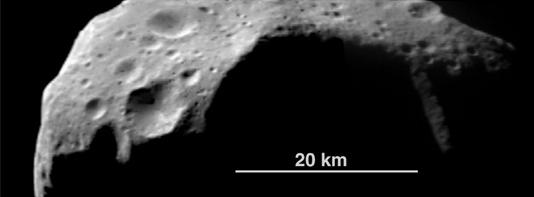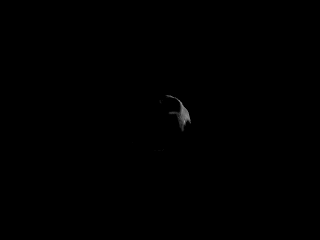253 Mathilde on:
[Wikipedia]
[Google]
[Amazon]
Mathilde ( minor planet designation: 253 Mathilde) is an asteroid in the intermediate
 In 1880, Johann Palisa, the director of the Austrian Naval Observatory , was offered a position as an assistant at the newly completed
In 1880, Johann Palisa, the director of the Austrian Naval Observatory , was offered a position as an assistant at the newly completed

 Mathilde is very dark, with an
Mathilde is very dark, with an
Flyby gif
* * {{DEFAULTSORT:000253 Background asteroids Mathilde Mathilde 19970627 Slow rotating minor planets Cb-type asteroids (SMASS) 18851112
asteroid belt
The asteroid belt is a torus-shaped region in the Solar System, located roughly between the orbits of the planets Jupiter and Mars. It contains a great many solid, irregularly shaped bodies, of many sizes, but much smaller than planets, c ...
, approximately 50 kilometers in diameter, that was discovered by Austrian astronomer Johann Palisa at Vienna Observatory
The Vienna Observatory (german: Universitätssternwarte Wien) is an astronomical observatory in Vienna, Austria. It is part of the University of Vienna. The first observatory was built in 1753–1754 on the roof of one of the university buildings ...
on 12 November 1885. It has a relatively elliptical orbit
In celestial mechanics, an orbit is the curved trajectory of an object such as the trajectory of a planet around a star, or of a natural satellite around a planet, or of an artificial satellite around an object or position in space such as ...
that requires more than four years to circle the Sun. This tumbling asteroid has an unusually slow rate of rotation, requiring 17.4 days to complete a 360° revolution
In political science, a revolution (Latin: ''revolutio'', "a turn around") is a fundamental and relatively sudden change in political power and political organization which occurs when the population revolts against the government, typically due ...
about its axis. It is a primitive C-type asteroid
C-type (carbonaceous) asteroids are the most common variety, forming around 75% of known asteroids. They are volatile-rich and distinguished by a very low albedo because their composition includes a large amount of carbon, in addition to rocks ...
, which means the surface has a high proportion of carbon
Carbon () is a chemical element with the symbol C and atomic number 6. It is nonmetallic and tetravalent—its atom making four electrons available to form covalent chemical bonds. It belongs to group 14 of the periodic table. Carbon mak ...
; giving it a dark surface that reflects only 4% of the light that falls on it.
Mathilde was visited by the NEAR Shoemaker
''Near Earth Asteroid Rendezvous – Shoemaker'' (''NEAR Shoemaker''), renamed after its 1996 launch in honor of planetary scientist Eugene Shoemaker, was a robotic space probe designed by the Johns Hopkins University Applied Physics Laborator ...
spacecraft during June 1997, on its way to asteroid 433 Eros
Eros (minor planet designation: (433) Eros), provisional designation is a stony asteroid of the Amor group and the first discovered and second-largest near-Earth object with an elongated shape and a mean diameter of approximately . Vis ...
. During the flyby, the spacecraft imaged a hemisphere of the asteroid, revealing many large craters that had gouged out depressions in the surface. It was the first carbonaceous asteroid to be explored and, until 21 Lutetia
)
, mp_category=Main belt
, mpc_name=(21) Lutetia
, orbit_ref =
, epoch=May 31, 2020 ( JD 2459000.5)
, semimajor=2.435 AU
, perihelion=2.037 AU
, aphelion=2.833 AU
, eccentricity=0.16339
, period=3.80 yr (1388.1 d)
, inclination=3.064� ...
was visited in 2010, was the largest asteroid to be visited by a spacecraft.
Observation history
 In 1880, Johann Palisa, the director of the Austrian Naval Observatory , was offered a position as an assistant at the newly completed
In 1880, Johann Palisa, the director of the Austrian Naval Observatory , was offered a position as an assistant at the newly completed Vienna Observatory
The Vienna Observatory (german: Universitätssternwarte Wien) is an astronomical observatory in Vienna, Austria. It is part of the University of Vienna. The first observatory was built in 1753–1754 on the roof of one of the university buildings ...
. Although the job represented a demotion for Johann, it gave him access to the new refractor, the largest telescope in the world at that time. By this point Johann had already discovered 27 asteroids, and he would employ the Vienna and instruments to find an additional 94 asteroids before he retired.
Among his discoveries was the asteroid 253 Mathilde, found on November 12, 1885. The initial orbital elements of the asteroid were then computed by V. A. Lebeuf, another Austrian astronomer working at the Paris Observatory. The name of the asteroid was suggested by Lebeuf, after Mathilde, the wife of Moritz Loewy
Maurice (Moritz) Loewy (15 April 1833 – 15 October 1907) was a French astronomer.
Loewy was born in Vienna.According to investigations by Anneliese Schnell (''Maurice Loewy and the equatorial Coudé in Vienna'', Astronomische Nachrichten, Vol. ...
—who was the vice director of the observatory in Paris.
In 1995, ground-based observations determined that Mathilde is a C-type asteroid
C-type (carbonaceous) asteroids are the most common variety, forming around 75% of known asteroids. They are volatile-rich and distinguished by a very low albedo because their composition includes a large amount of carbon, in addition to rocks ...
. It was also found to have an unusually long period of rotation of 418 hours.
On June 27, 1997, the NEAR Shoemaker
''Near Earth Asteroid Rendezvous – Shoemaker'' (''NEAR Shoemaker''), renamed after its 1996 launch in honor of planetary scientist Eugene Shoemaker, was a robotic space probe designed by the Johns Hopkins University Applied Physics Labora ...
spacecraft passed within 1,212 km of Mathilde while moving at a velocity of 9.93 km/s. This close approach allowed the spacecraft to capture over 500 images of the surface, and provided data for more accurate determinations of the asteroid's dimensions and mass (based on gravitational perturbation of the spacecraft). However, only one hemisphere of Mathilde was imaged during the fly-by. This was only the third asteroid to be imaged from a nearby distance, following 951 Gaspra
951 Gaspra is an S-type asteroid that orbits very close to the inner edge of the asteroid belt. Gaspra was discovered by Russian astronomer G. N. Neujmin in 1916. Neujmin named it after Gaspra, a Black Sea retreat that was visited by his contem ...
and 243 Ida
Ida, minor planet designation 243 Ida, is an asteroid in the Koronis family of the asteroid belt. It was discovered on 29 September 1884 by Austrian astronomer Johann Palisa at Vienna Observatory and named after a nymph from Greek mythology. ...
.
Characteristics

 Mathilde is very dark, with an
Mathilde is very dark, with an albedo
Albedo (; ) is the measure of the diffuse reflection of solar radiation out of the total solar radiation and measured on a scale from 0, corresponding to a black body that absorbs all incident radiation, to 1, corresponding to a body that refl ...
comparable to fresh asphalt
Asphalt, also known as bitumen (, ), is a sticky, black, highly viscous liquid or semi-solid form of petroleum. It may be found in natural deposits or may be a refined product, and is classed as a pitch. Before the 20th century, the term ...
, and is thought to share the same composition as CI1 or CM2 carbonaceous chondrite meteorites, with a surface dominated by phyllosilicate minerals. The asteroid has a number of extremely large craters, with the individual craters being named for coal
Coal is a combustible black or brownish-black sedimentary rock, formed as rock strata called coal seams. Coal is mostly carbon with variable amounts of other elements, chiefly hydrogen, sulfur, oxygen, and nitrogen.
Coal is formed when ...
fields and basins around the world. The two largest craters, Ishikari (29.3 km) and Karoo (33.4 km), are as wide as the asteroid's average radius. The impacts appear to have spalled large volumes off the asteroid, as suggested by the angular edges of the craters. No differences in brightness or colour were visible in the craters and there was no appearance of layering, so the asteroid's interior must be very homogeneous. There are indications of material movement along the downslope direction.
The density measured by NEAR Shoemaker, 1,300 kg/m3, is less than half that of a typical carbonaceous chondrite; this may indicate that the asteroid is very loosely packed rubble pile
In astronomy, a rubble pile is a celestial body that is not a monolith, consisting instead of numerous pieces of rock that have coalesced under the influence of gravity. Rubble piles have low density because there are large cavities between the ...
. The same is true of several C-type asteroids studied by ground-based telescopes equipped with adaptive optics
Adaptive optics (AO) is a technology used to improve the performance of optical systems by reducing the effect of incoming wavefront distortions by deforming a mirror in order to compensate for the distortion. It is used in astronomical tele ...
systems ( 45 Eugenia, 90 Antiope, 87 Sylvia and 121 Hermione
Hermione (minor planet designation: 121 Hermione) is a very large binary asteroid discovered in 1872. It orbits in the Cybele group in the far outer asteroid belt. As an asteroid of the dark C spectral type, it is probably composed of carbonaceo ...
). Up to 50% of the interior volume of Mathilde consists of open space. However, the existence of a 20-km-long scarp may indicate that the asteroid does have some structural strength, so it could contain some large internal components. The low interior density is an inefficient transmitter of impact shock through the asteroid, which also helps to preserve the surface features to a high degree.
Mathilde's orbit
In celestial mechanics, an orbit is the curved trajectory of an object such as the trajectory of a planet around a star, or of a natural satellite around a planet, or of an artificial satellite around an object or position in space such as ...
is eccentric, taking it to the outer reaches of the main belt. Nonetheless, the orbit lies entirely between the orbits of Mars
Mars is the fourth planet from the Sun and the second-smallest planet in the Solar System, only being larger than Mercury. In the English language, Mars is named for the Roman god of war. Mars is a terrestrial planet with a thin at ...
and Jupiter
Jupiter is the fifth planet from the Sun and the largest in the Solar System. It is a gas giant with a mass more than two and a half times that of all the other planets in the Solar System combined, but slightly less than one-thousandth t ...
; it does not cross the planetary orbits. It also has one of the slowest rotation periods of the known asteroids—most asteroids have a rotation period in the range of 2–24 hours. Because of the slow rotation rate, NEAR Shoemaker was only able to photograph 60% of the asteroid's surface. The slow rate of rotation may be accounted for by a satellite orbiting the asteroid, but a search of the NEAR images revealed none larger than 10 km in diameter out to 20 times the radius of Mathilde.
See also
* List of craters on 253 MathildeReferences
External links
* * *Flyby gif
* * {{DEFAULTSORT:000253 Background asteroids Mathilde Mathilde 19970627 Slow rotating minor planets Cb-type asteroids (SMASS) 18851112